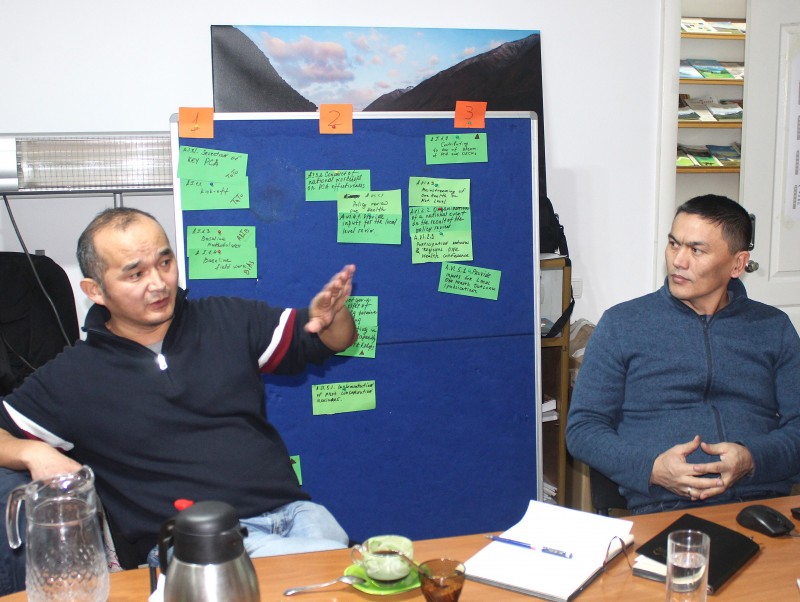
A decision to approve ecological corridors for wildlife in the Issyk-Kul and Naryn regions was made during a meeting involving the heads of the Department of Biodiversity Conservation and Protected Areas, the Ministry of Natural Resources, Ecology, and Technical Supervision, scientists, and the project team of "Adaptation of Migratory Mammals to Climate Change in the Kyrgyz Republic," implemented by the СAMР Alatoo РF with support from IKI-UNEP. Assistance in designing the ecological corridors was provided by scientists from Humboldt University in Berlin. The model was developed based on GPS tracking data of animal movement provided by colleagues from CAAWR, the Ilbirs Foundation, and the National Academy of Sciences of the Kyrgyz Republic (NAS KR).
According to representatives of the Department of Biodiversity Conservation and Protected Areas, creating ecological corridors is a vital step in preserving and protecting unique animal species, contributing to the sustainable development of the regions. This perspective was echoed by Askar Davletbakov, a scientist from NAS KR, who stated: "Migration routes and ecological corridors are formed to ensure spatial connectivity between protected areas and other elements of the ecological network, aiming to conserve state-protected nature reserves and biodiversity."
The ecological corridors link Khan-Tengri National Park (Issyk-Kul region) and Naryn State Nature Reserve (Naryn region). Their total length spans 200 km, with widths varying between 25 and 75 km, reflecting the diverse ecological needs of species and their energy requirements for movement. As project coordinator Salamat Djumabaeva explained, "The routes with minimal obstacles for movement and a safe habitat have been identified for mammals such as argali, ibex, snow leopards, and wolves."
When modeling the corridors, particular attention was paid to the impacts of climate change and potential infrastructure developments, such as roads or bridges, that may emerge in the future. Azamat Isakov, UNEP’s regional representative, noted, "The next stage involves integrating ecological corridors into pasture management plans for local communities within the project area. This will provide long-term protection for migrating wildlife species."
The issue of pasture use within the ecological corridors directly involves local self-governments, resource users, and staff from reserves and parks. Specialists emphasized that to avoid potential conflicts, local authorities must adjust grazing schedules in pasture management plans to align with wildlife migration periods. Additionally, hunting license holders must account for these periods by temporarily suspending hunting activities and refraining from actions that might disturb the animals.
To formally integrate the ecological corridors into land management plans, an official assessment and approval by the Ministry of Natural Resources of the Kyrgyz Republic and NAS KR will be required. Following this, recommendations will be forwarded to district and regional authorities for on-ground implementation.
Итоги пастбищного сезона 2018 года были подведены на очередном заседании районной пастбищной комиссии (РПК).
MoreThe development of the unified method, "Monitoring Pastures at the Local Level," is nearing completion.
MoreЧетыре новых моста построены в 2018 году в Кыргызстане при поддержке ОФ “CAMP Алатоо” и Швейцарской ассоциации “Памирские...
More